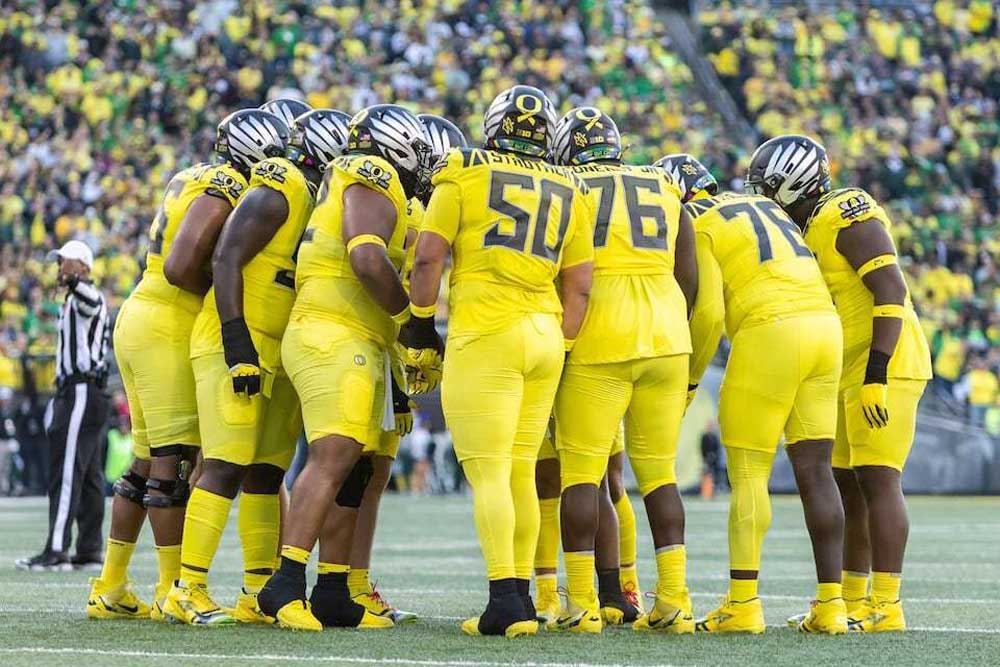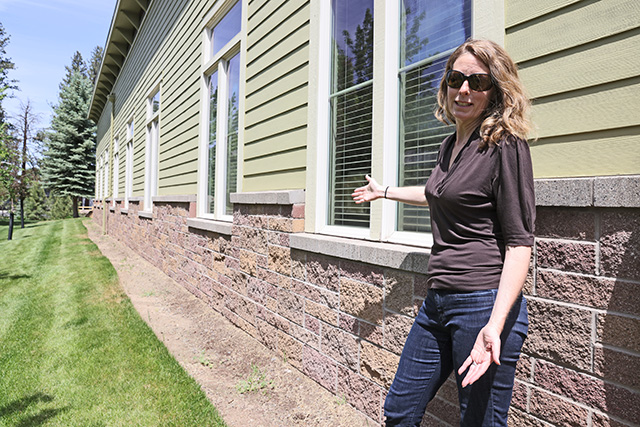Commentary: $2,000 college football tickets could be the new norm
Published 9:00 pm Monday, December 9, 2024

- The Oregon offense huddles up as the No. 6 Ducks face the Michigan State Spartans in a Big Ten college football game at Autzen Stadium in Eugene on Saturday Oct. 4, 2024.
In the days and weeks leading up to last weekend’s grinding football clash between rivals Texas and Texas A&M, the median price per ticket was over $2,000 on StubHub. Hours before the game, the cheapest seats cost over $750 on SeatGeek and were located in the upper reaches of Kyle Field, a stadium that seats 102,733 people.
Those profits from those markups went to the private resellers rather than the schools, but athletic departments are following suit. In search of revenues to attract and pay athletes, they are raising ticket prices to better capture market value and taking gameday upscale. It’s a necessary shift: Colleges and universities can no longer afford to offer amateur experiences in the stadium when they’re paying for a professional product on the field. But with that evolution comes the erosion of some of the traditions that have defined college football for a century.
The earlier days of the sport prioritized filling cavernous stadiums with as many everyday fans as possible. For example, the University of Michigan’s Michigan Stadium, built in 1927, holds nearly 110,000 people, most of whom sit on hard, backless bleachers. It’s an uncomfortable but egalitarian arrangement that creates a sense of community and one of the most electric atmospheres in American sports.
But the business model that enabled the feeling — including relying upon unpaid amateur athletes — is disappearing. Earlier this year, the National Collegiate Athletic Association reached a legal settlement with thousands of players that will allow schools to pay current athletes around $20 million per year starting in 2025 (the parties are awaiting final sign-off by the courts).
For schools such as Northwestern, which has one of the smallest student populations in the Big Ten or SEC, that’s around 17% of its $117.6 million athletics budget in 2023. So rather than build its own Michigan Stadium (the third largest in the world), Northwestern is in the process of replacing its 47,000-seat Ryan Field with a new, $850 million, 35,000-seat stadium. It will be the most expensive college football stadium ever built while also being the smallest stadium in college football’s two wealthiest conferences, the Big Ten and SEC.
Part of the goal is to drive up ticket prices and revenue by constraining supply. It appears to work. During this season and the next one, the school’s football team, the Wildcats, is playing in a temporary, 12,000-seat pop-up stadium while the new Ryan Field is being built. According to Sports Business Journal, the interim setup has quadrupled the revenues generated by its larger, nearly century-old predecessor.
But those ballooning revenues (and the ticket prices that support them) aren’t just about fewer seats. They’re the direct result of a decision to double the number of pricey premium seats that were available in the old stadium. Prices for the top tier ran as high as $3,049 this season, and games sold out.
It’s not just Northwestern that’s thinking more like an NFL team’s business office, either. Across the sport, athletic departments are looking to earn more money from gamedays. In September, for example, the University of Tennessee announced that the price of football season tickets will rise 14.5% in 2025, with a minimum of 10% earmarked for athlete revenue sharing or what it called a “talent fee.”
These changes will cost more than dollars and cents. As games become more exclusive, it will be at the expense of the bonds formed over sports watching — particularly among students.
To be sure, they will still be in the stadium; schools typically offer low(er) cost student tickets (though those have been ticking upward in price, too). But if students become the low-revenue outliers in stadiums packed with premium seats, it’s fair to wonder how long it’ll be before athletic departments view them as unfairly occupying under-valued real estate in a money-making enterprise. Sure, they provide a college gameday atmosphere. But when there’s a payroll to meet, something has to give.








